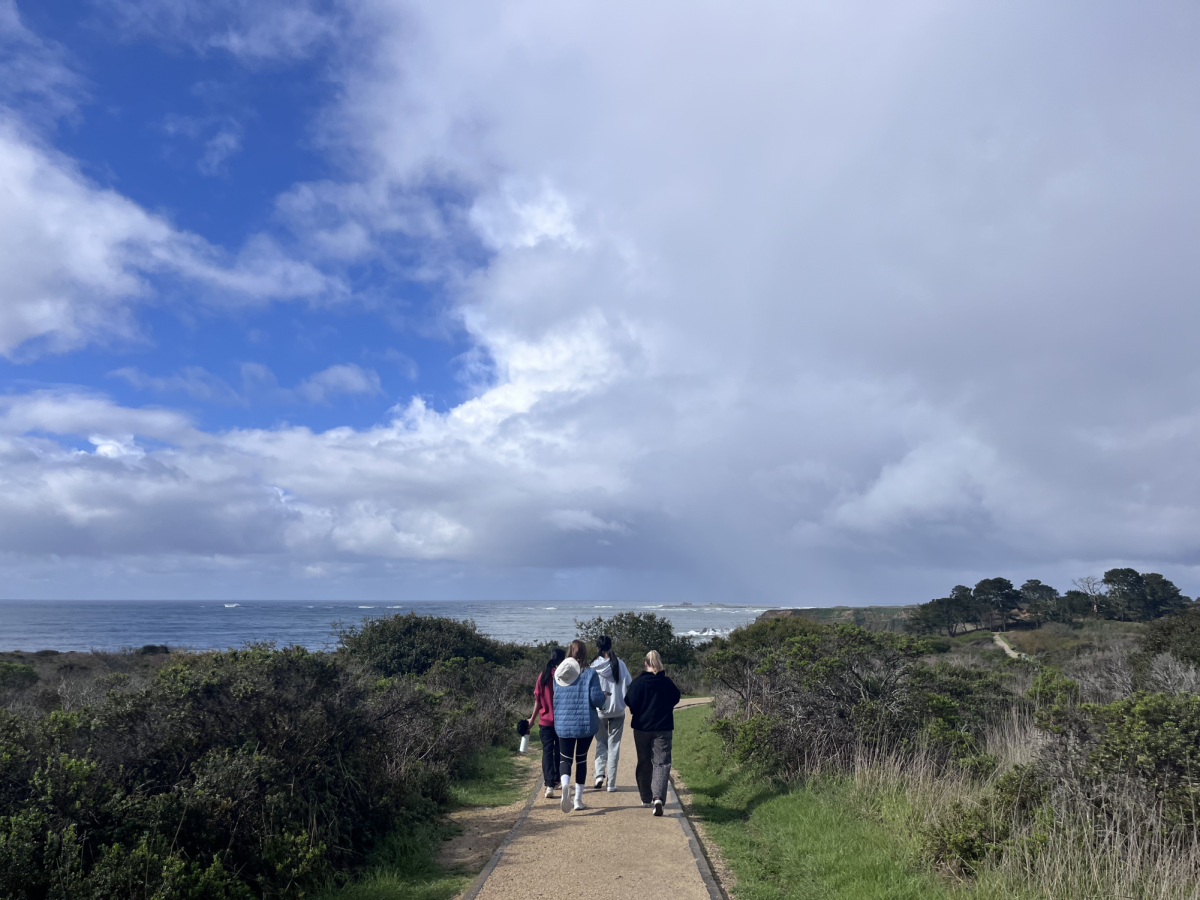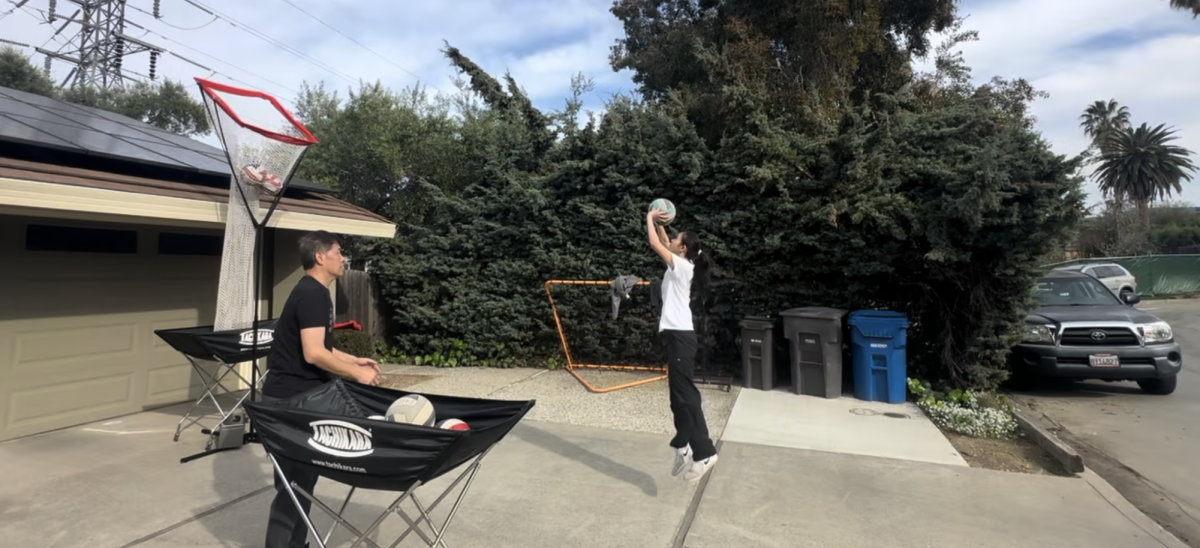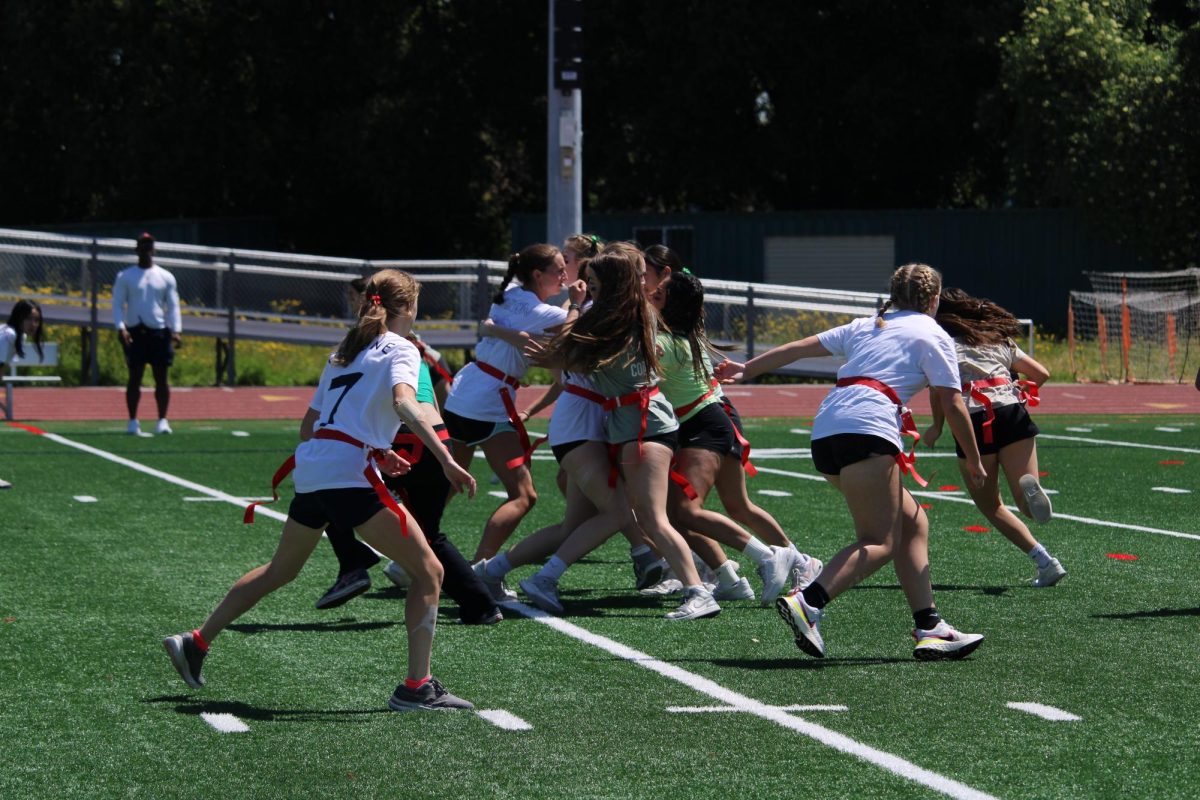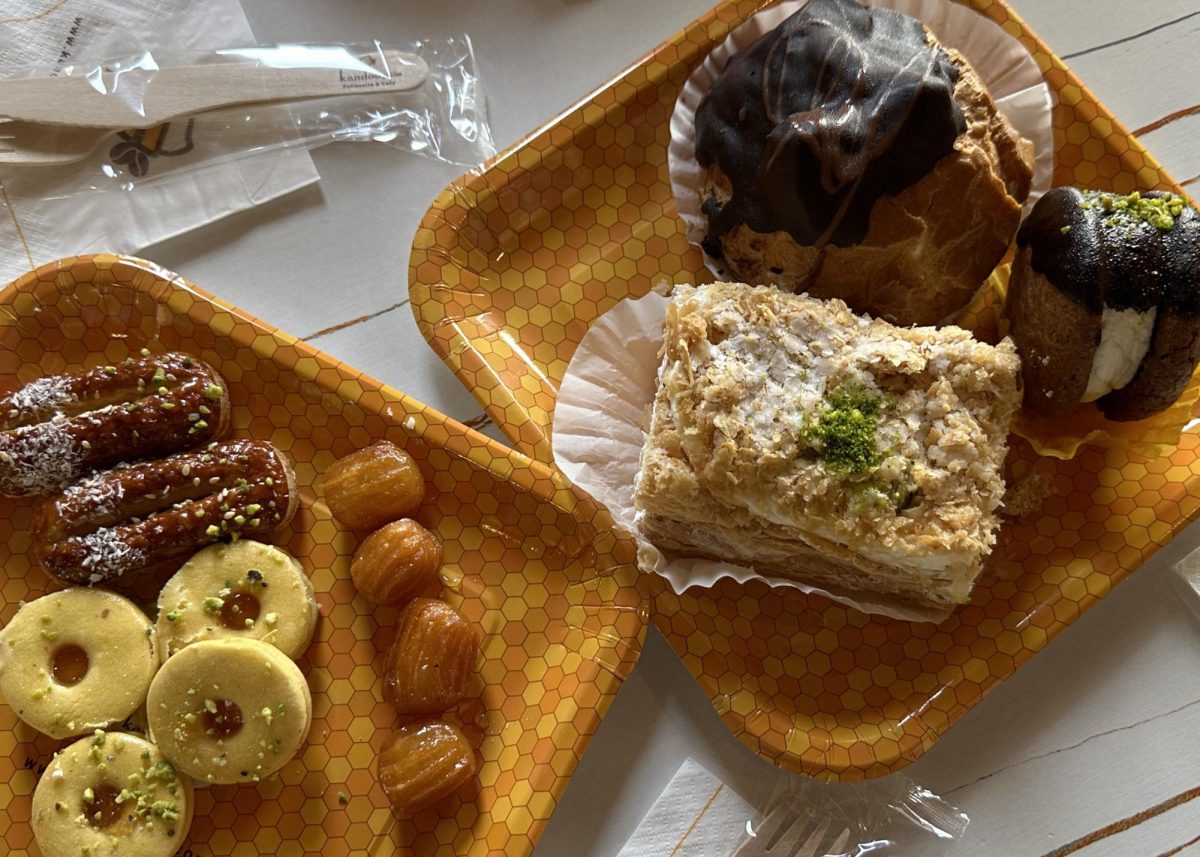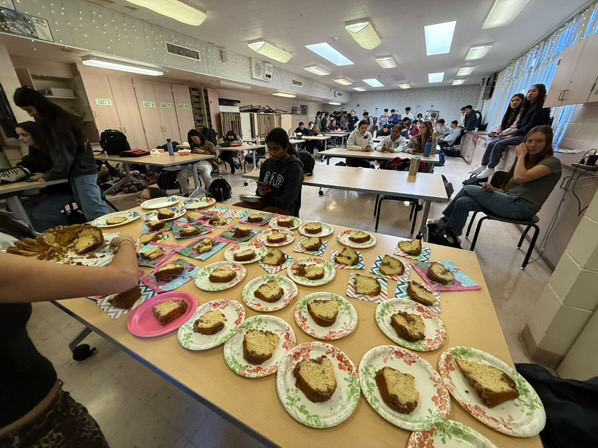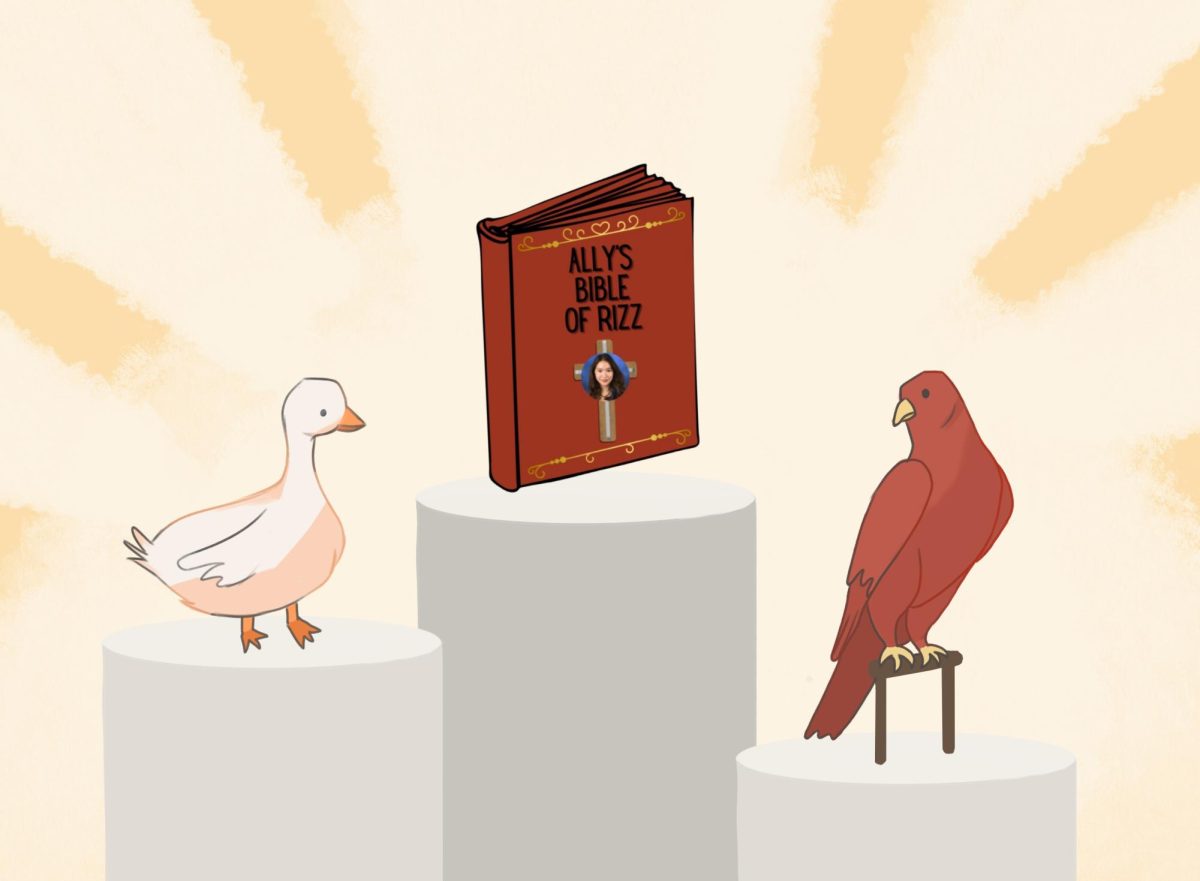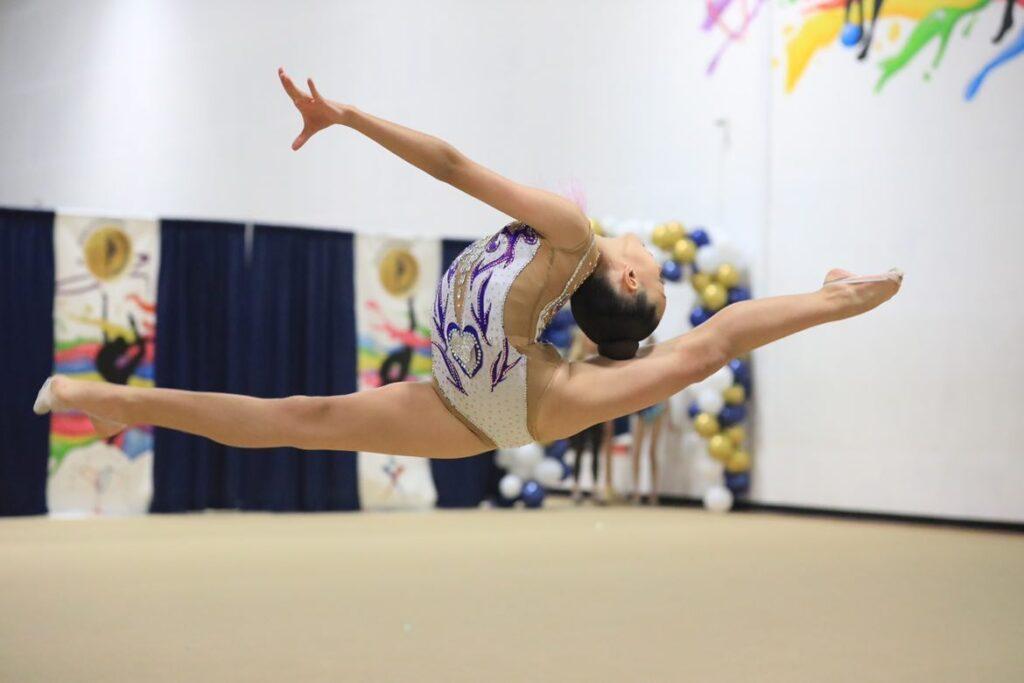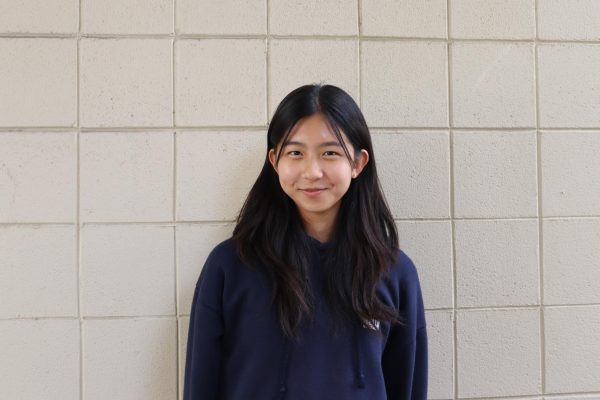After long school days, freshman Ece Guvener has another commitment that requires a 30-minute commute to Bravo Gymnastics studio in Redwood City for a sport she has done since age 7: rhythmic gymnastics.
Once in the gym, she stretches on her own and then participates in 4-hour practices focusing on typical rhythmic gymnastics skills, whether it’s tossing a rubber ball into the air or twirling a ribbon.
Returning home after 8 p.m., she works on homework, exhausted, ready to repeat her hectic routine the next day.
While Guvener started her sport when she was a 7-year-old growing up in her home country of Turkey, she said it is relatively late for rhythmic gymnasts to start. She later moved to the US with her parents at age 11 and continued the sport here.
Even though she started rhythmic gymnastics relatively late, Guvener practiced artistic gymnastics and dance starting at age 3, which ultimately contributed to her success in rhythmic gymnastics, as her new sport was a combination of normal gymnastics and dance.
“I used to do artistic gymnastics and I had friends that were doing artistic gymnastics that also did rhythmic gymnastics, which made me want to join too,” Guvener said.
Similar to artistic gymnastics, rhythmic gymnasts perform routines across the floor, incorporating the flexible and lyrical aspects of dance, such as illusions and turns. But unlike these other two sports, rhythmic gymnastics also involves five apparatuses that athletes throw into the air: a rope, ball, hoop, ribbon and clubs. Ultimately, the sport heavily relies on coordination, flexibility and strength conditioning.
“We do a lot of cardio like jump roping and active workouts,” Guvener said. “We also work on back, core, legs and relevés (a dance move where dancers rise onto the tips of their toes) and we stretch a lot, such as doing our oversplits.”
She practices four days a week, with additional, one-hour private lessons mixed in. During the summer, Guvener also participates in summer camps, and as part of her training at the gym, she takes ballet lessons.
Upon arriving in the U.S., she was a Level 7 rhythmic gymnast. Within two years, she moved up to Level 9 Junior — because coaches are given the freedom to choose which level students will be in around the country, Level 9 is divided into Hope (born in 2012 or 2013), Junior (born 2011-2009) and Senior (2008 and older).
During competition season — which spans from December to May — she competes about once every two weeks. Guvener competed in the Western Classic, held from April 27-29, where the top 28 of 84 competitors qualified for Rhythmic Elite Qualifiers on May 17-19. After Elite Qualifiers, the top Level 9 gymnasts qualify for Championships and become Level 10s. This competition is the only opportunity for Level 9 gymnasts to advance to the highest level. At Western Classic, Guvener placed 39th of the 84 competitors, meaning she will have to wait another year to qualify to Level 10.
Disappointingly, no colleges have rhythmic gymnastics teams, meaning Guvener will not be able to continue competing beyond high school.
Nevertheless, the small community of rhythm gymnasts is comforting to Guvener. Due to the limited popularity of her sport, she personally knows many of her competitors and judges. During competition seasons, she generally attends competitions with her entire team, allowing them to grow close.
“My sport sets a really good foundation for dance, so I might take dance classes to keep in touch with my sport after I quit [in college],” she said.
Ultimately, the sport has been part of her life for over seven years, and Guvener continues to enjoy it each season because of both her growth in the sport and the encouraging environment.
“Our team is very supportive and I love all of my teammates so much,” she said. “I don’t think competing against each other is much of a problem in our gym; we support each other no matter what.”



